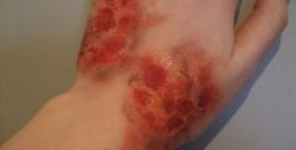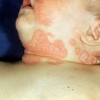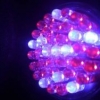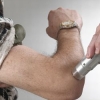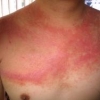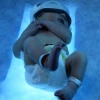La fototerapia con UVB a banda stretta, UVA/UVBnb e UVA1 ha effetti diversi sulla 25-idrossivitamina D3
 I raggi ultravioletti (UV) B aumentano i livelli sierici di 25- idrossivitamina-D3 [25(OH)D], ma non si conosce ancora l'influenza della fototerapia con UVA1 e UVA/UVB a banda stretta (UVBnb) sulla vitamina D sierica.
I raggi ultravioletti (UV) B aumentano i livelli sierici di 25- idrossivitamina-D3 [25(OH)D], ma non si conosce ancora l'influenza della fototerapia con UVA1 e UVA/UVB a banda stretta (UVBnb) sulla vitamina D sierica.
Obiettivo
Abbiamo cercato di studiare l'influenza della fototerapia con UVBnb, UVA1 e UVA/UVBnb sui livelli sierici di 25(OH)D e sui parametri correlati in pazienti con condizione infiammatoria della pelle.
Metodi
La 25(OH)D, così come il calcio, il paratormone, il fosfato e l'albumina sono stati misurati prima della terapia, dopo 2 settimane dall'inizio del trattamento e alla fine dello stesso. Le diagnosi sono state divise in 4 gruppi: dermatite atopica, psoriasi, morfea e altre.
Risultati
Abbiamo intervistato 116 pazienti dermatologici sottoposti a fototerapia con UVA1 (n = 38), UVA/UVBnb (n = 30) o UVBnb (n = 48) 2-3 volte a settimana per un totale di 53-90 giorni. La fototerapia con UVBnb ha aumentato la 25(OH)D sierica da 22.1 a 39.5 ng/mL dopo la terapia (P < .001). Il livello più basso di 25(OH)D è stato quello al basale, mentre l'incremento più rapido di 25(OH)D si è verificato subito dopo l'applicazione della fototerapia con UVBnb. La terapia con UVA/UVBnb ha aumentato anche i livelli sierici di 25(OH)D da 23.9 a 50.3 ng/mL (P = .003). Al contrario, nel gruppo di terapia con UVA1, i livelli sierici di 25(OH)D sono diminuiti significativamente da 21.9 a 19.0 ng/mL (P < .001).
Limitazioni
Si è trattato di uno studio aperto senza randomizzazione. A causa dell'eterogeneità delle diagnosi, non può essere esclusa l'influenza di una precisa malattia cutanea. Il bias è potuto sorgere dalla preferenza del paziente per il trattamento, per le differenze non riconosciute nella malattia cutanea di base o per altri fattori.
Conclusione
La fototerapia con UVBnb e UVA/UVBnb ha determinato un aumento molto spiccato dei livelli sierici di 25(OH)D e solo la terapia con UVA1 ha ridotto tali livelli.
Storia della pubblicazione:
Titolo: Phototherapy with UVB narrowband, UVA/UVBnb, and UVA1 differentially impacts serum 25-hydroxyvitamin-D3
Rivista: Journal of the American Academy of Dermatology. Volume 69, Issue 4 , Pages 530-536, October 2013
Autori: Laurence Feldmeyer, Golnar Shojaati, Katharina- Susanne Spanaus, Alexander Navarini, Barbara Theler, Davide Donghi, Mirjana Urosevic-Maiwald, Martin Glatz, Laurence Imhof, Marjam J. Barysch, Reinhard Dummer, Malgorzata Roos, Lars E. French, Christian Surber, Günther F.L. Hofbauer
Affiliazioni:Department of Dermatology, University Hospital Zurich, Zurich, Switzerland
Abstract:
Background Ultraviolet (UV) B radiation increases serum 25- hydroxyvitamin-D3 [25(OH)D], but the influence of UVA1 and UVA/narrowband UVB (UVBnb) phototherapy on serum vitamin D is unknown. Objective We sought to investigate the influence of UVBnb, UVA1, and UVA/UVBnb phototherapy on serum levels of 25(OH)D and related parameters in patients with an inflammatory skin condition. Methods 25(OH)D, as well as calcium, parathormone, phosphate, and albumin were measured before therapy, 2 weeks after start, and after completion of the phototherapy. Diagnoses were divided in 4 groups: atopic dermatitis, psoriasis, morphea, and others. Results We surveyed 116 dermatologic patients undergoing phototherapy with UVA1 (n = 38), UVA/UVBnb (n = 30), or UVBnb (n = 48) 2 to 3 times a week for 53 to 90 days. UVBnb phototherapy increased serum 25(OH)D from 22.1 to 39.5 ng/mL after the therapy (P < .001). The lower the baseline 25(OH)D level was, the steeper the increase in 25(OH)D was upon application of UVBnb phototherapy. UVA/UVBnb therapy also increased serum 25(OH)D, from 23.9 to 50.3 ng/mL (P = .003). Conversely, in the UVA1 therapy group, 25(OH)D serum levels decreased significantly from 21.9 to 19.0 ng/mL (P < .001). Limitations The study design was open trial without randomization. An influence of a precise skin disease cannot be excluded because of the heterogeneous diagnoses. Bias may have arisen from patient preference for treatment at our center, referral, unrecognized differences in underlying skin disease, and other factors. Conclusion Phototherapy with UVBnb and UVA/UVBnb increased 25(OH)D serum level significantly. UVA1 therapy alone induced a reduction in serum 25(OH)D concentrations.
